27 Essential Electrician Tools For Electrical Work

When it comes to working on electrical projects, having the right tools is essential for getting the job done safely and efficiently. From wire strippers to voltage testers, there are a variety of electric tools that are necessary for any professional or DIY electrician. In this article, we will discuss the top electrician tools that you need to have in your toolbox to tackle any electrical project.
Essential Tools for Electricians
The best tools for electricians are:
1. Screwdrivers
These tools are frequently employed improperly. In addition to their intended usage, they can also be used for prying, opening paint cans, and hole-punching. Remember that the appropriate tool should be used for the task.
Two types of screwdrivers are encountered most commonly: the Phillips-head and the standard or slot type. Screwdrivers come in thousands of variations.
Screwdrivers can typically be found with either wooden or plastic handles, though plastic is far more prevalent. When handling electricity, plastic handles come in quite handy. In theory, plastic should be shockproof as long as the handle is maintained dry and clean. The size of the blade tip can range from 1/8 to 1/4 in. The shaft is typically composed of nickel-plated chrome-vanadium steel and ranges in length from 4 to 8 inches. When a screw sticks or is difficult to remove, the tips or points must withstand the force used.
The most important thing to keep in mind when using a screwdriver is to ensure that the screwdriver tip and the slot in the screw are properly aligned. By doing this, you can keep the screwdriver and screw head from getting damaged.
There are many varieties of screwdrivers available. They are typically modified for a specific function. To boost efficiency in putting the driver into the screw head for a positive mating and a more positive driving force, the screw head from the slot to another type has mostly been changed. For information on additional screw-head configurations, see the image below.
2. Pliers
For specialized tasks, there are a variety of pliers available. The range of pliers available for work in the electrical and electronics area is demonstrated in the figure below. Each plier has been assigned a specific task.

1-) 4-in. midget for close work. (Check price)
2-)4-in. plier for fast, clean tip cutting. It has a tapered nose and nearly flush cutting edges and will cut to the tip, producing burr-free cuts. (Check price)
3-) 7-in. diagonal pliers for heavy-duty cutting. (Check price)
4-) 1/2-in. thin needle-nose plier, with the cutter at the tip. (Check price)
6-) 5-in. thin chain-nose plier, whose smooth jaws are slightly beveled on the inside edges. (Check price)
7-) 5-in. plier with fine serrated jaws for firm gripping or looping wire. (Check price)
8- ) Slim serrated jaws (6 in. long); permit entry in areas inaccessible to regular long-nose pliers. (Check price)
9-) Long-nose plier (6 1/2 in. long) with the side cutter. (Check price)
10-) Long-nose plier (6 1/2 in. long) without side cutter.
11-) Thin 60°-bent nose plier (5 in.) with fine serrated jaws for thin wire applications.
12-) and 13 were removed from consideration in this type of work.
14-) 8-in. serrated upper- and lower-jaw plier with the side cutter. (Check price)
15-) 8-in. chrome-plated combination plier for general use. (Check price)
16-) Four-position 10-in. utility plier with forged rib and lock design with serrated jaws. (Check price)
3. Hammers
There are various hammer types, much like with other hand tools. The three most typical are ideal for technicians or electricians.
The claw hammer is used to drive nails and to work mainly with wood; it has claws with which to remove nails. It is the most common type of hammer but is used only occasionally in most work where a ball-peen hammer is not available.
The ball-peen hammer has a rounded top and a flat, large-diameter bottom surface. It is used in working around machinery.
In some cases, a mallet is needed to force a connection or to make a slight adjustment. Mallets can be obtained with either a soft face or a hard face. Leather, plastic, rubber, wood and lead mallets are used for various jobs as the need arises. In most instances, a rubber mallet is used to enable you to do the job without marring the surface of the metal being hit. Keep in mind that you should be careful with your hammer or mallet blows. Use eye protection.
4. Hacksaws
Hacksaws are very useful for cutting metal. Blades come in 8-, 10- and 12-in. lengths. The hacksaw is usually adjustable to fit any of the three-blade lengths. Hacksaw blades also come in several tooth sizes. Use 14-teeth-per-inch blades for cutting 1-in. or thicker sections of cast iron, machine steel, brass, copper, aluminum, bronze or slate. Use 18-tooth-per-inch blades for cutting 1/4- to 1-in.-thick sections of annealed tool steel, high-speed steel, rail, bronze, aluminum, light structural shapes and copper. The 24-tooth-per-inch blade is used for cutting 1/8- to 1/4-in.-thick section of materials. It is usually best for iron, steel, brass, and copper tubing, wrought iron pipe, drill rod, conduit, light structural shapes and metal trim. The 32-tooth-per-inch blade is used for cutting material similar to that recommended for 24-tooth-per-inch blades.
5. Wrenches
Wrenches are used to tighten and loosen nuts and bolts. Two general types of wrenches are adjustable and non-adjustable wrenches. Adjustable wrenches have one jaw that can be adjusted to accommodate different nut and bolt sizes and may range from 4 to 18 in. in length for different types of work. When adjustable wrenches are used, there are two rules to remember:
- Place the wrench on the nut or bolt so that the force will be placed on the fixed jaw.
- Tighten the adjustable jaw so that the wrench fits the nut or bolt snugly.
Non-adjustable wrenches have fixed openings to fit nuts and bolt heads. These wrenches are available in sets and also in metric sizes. Openings are usually 0.005 to 0.015 in. larger than the size marked on the wrench to allow the wrench to be slipped easily over the nut or bolt head. Make sure, however, that the wrench fits the nut or bolt head properly; otherwise, the nut or bolt head may get damaged. It is safer to pull than to push a wrench. If you exert pressure on a wrench and the nut or bolt head suddenly breaks loose, there is a chance that you will injure your hand. If the wrench must be pushed rather than pulled, use the palm of the hand so that the knuckles will not be injured if there is a slip.
a. Allen wrenches
Allen wrenches are designed to be used with headless screws. These screws are used in many devices such as setscrews. Allen wrenches come in a variety of sizes to fit any number of set screws. A complete set is especially helpful in motor work.
Another type of recessed setscrew head has an Allen-type hole but ridges in each flat side make it difficult for an Allen wrench to fit. Newer hex-socket key sets are made in 3/32 to 1/4-in. sizes with 8 blades in a set.
b. Socket wrenches
It is possible to utilize socket wrenches in places that are difficult to reach with a box-end or open-end wrench. The ratchet’s sockets can easily be removed and changed for ones of a different size. Both a 12-point and a 6-point array of sockets are available. Use the right size of nut or bolt head for each application. Metric socket wrench sizes are also offered.
c. Torque wrenches
Torque wrenches, which are designed to apply proper torque to various bolts and nuts, are made to fit various socket drives. Two popular sizes of torque wrenches are the 3/8-in. drive and the 1/2-in. drive. Torque wrenches are made to measure in pound inches (lb-in.) and pound-feet (lb-ft). Use the proper wrench for the torque that has to be applied. The wrenches come in various handle lengths. Normally, the longer the wrench, the greater the torque the wrench will measure.
6. Nut drivers
The nut driver is simply a socket with a screwdriver handle attached. For the majority of work done at a bench, it is a great tool. The size of a nut driver is typically stamped on the handle and ranges from small to large. They may occasionally be color-coded by size.
7. Tools for bearings and bushings
In motor repair, it is sometimes necessary to remove a bearing from the end bell of a motor. A bearing tool makes this task somewhat easier. A bearing tool eliminates the chance of broken bearings or end bells.
Some bearing removals need a different approach. The pulley or gear puller can, in some instances, be used to remove a bearing that has stuck on the motor shaft. These pullers come in a variety of sizes and styles.
Bushing tools have been designed for removing or inserting bushings in motors. They are handy time-savers.
8. Solderless connector crimper
The solderless connector crimper is very useful in motor work. It takes a good connection to withstand the vibration of a motor. Several contactors have been designed for electrical work. The tool and kit of connectors and lugs of various sizes are available at most electrical supply houses.
9. Soldering iron
The soldering iron comes in handy when it is necessary to make a solder connection that will take vibration and withstand corrosion. Soldering irons of about 15 watts (W) to over 600 W are available in the market. The best all-purpose soldering iron for use in the shop is about 100 W. This will do the job in most cases where larger wires are involved. The small 15-W irons are very useful in electronics work on printed circuit boards.
10. Soldering gun
The soldering gun is very handy for making quick disconnects of soldered joints. Cold solder joints result when the operator heats the tip, places solder on it and then lets the solder cool on the joint. The wires being soldered on the metal surface and the wire connected to it must be heated up to a temperature sufficient to melt the solder. This means that the gun must be left in one spot long enough to cause the joint to be heated to the temperature needed to melt the solder. The secret is to heat the material, not the solder.
11. Wire gages
To measure wire size, wire gages are required. The wire size is indicated by the numbers on the gauge. But remember that Formvar-insulated wire will read one size larger. Also keep in mind that the wire is passed through the gage’s slit. The wire can be inserted through the hole. The measurement is done by the slot. Pull the wire through the hole and out of the slot. Typically, decimal equivalents are stamped on the metal disk adjacent to the gauge digits. A wire gauge should be in every toolbox.
12. Fuse puller
Fuse pullers are made of phenolic material that has been shaped so that you can pull at least two sizes of fuse with them. A fuse puller catches the round body of the fuse and allows you to extract the fuse from its holder, without coming in contact with the live circuit.
13. Tachometer
It is advisable to use a handheld tachometer, which is available in analog and digital variants and measures speed in revolutions per minute (rpm), to evaluate the rotational speed of an electric motor. A tachometer is a fantastic tool for calculating motor speed. It can assist in identifying potential issues and show whether a motor is functioning properly after being repaired.
The tachometer can be used on motors, saws, compressors, fans, pumps, grinders, and other machinery. It can also be mounted on the open end of a motor shaft. For shafts with center holes, a cone-shaped tip is used; for shafts with flat ends, a cup-shaped tip is utilized. There are tachometers that count the number of rotations per minute using a strobe light, but they are a bit more expensive.
14. Knockout punch
Knockout punches come in many sizes. They are used to make holes in metal boxes for enclosures of various control devices. They range from a simple punch that uses wrenches to large hydraulic units utilized to punch holes in very heavy gauge metals.
15. Fish tape
The fish tape is necessary for guiding wires into junction boxes, into conduits, and through walls.
16. Cable stripper
A larger-gage wire (cable) has to be stripped for a T-tap or mid-span strip. In most instances, a cable stripper is used for stripping insulation so that placing lugs on the end of the wire or cable is much easier.
17. Cable cutter
Hand-operated cable cutters are used to make a shear-type cut for large-size wire. Long fiberglass handles give leverage. A cable cutter can cut cables up to 750 MCM (750,000 circular mils). The clean-cut result makes it easier to fit cable ends into lugs.
18. Electrician’s knives
The jackknife is used to cut insulation. Every toolbox should have a handy jack knife with very sharp blades.
Another knife that comes in handy for the electrician or anyone working around electrical equipment is the skinning knife. This knife fits in the toolbox or in the tool pouch with the proper cover.
19. Digital multimeter
A multimeter is a device that can test several electrical parameters. The most common and important quantities you’ll need to measure are voltage (volts), resistance (ohms), and current (amps or, more typically milliamps). The analog incarnation of this test device, recognizable by its big meter needle and multiple-stop selector knob, used to be called a VOM (volt-ohm-milliammeter). Now that the meters are digital, they’re usually called DMMs (digital multimeters) but they do the same thing, except that the readout is numerical instead of something interpreted from the position of a meter needle.
DMMs began as very expensive, high-end laboratory instruments but they’re cheap now and pretty much all you can buy.
20. Voltage tester
The voltage tester is flexible and simple to operate. The tool is a requirement for your electrical tool belt. It accurately gauges circuit continuity, polarity, and AC/DC voltage. Additionally, the device offers low-impedance testing and rotational field indication. This meter will offer years of dependable performance with careful use.
21. Oscilloscope
The only device that genuinely allows you to view what’s happening in an electronic circuit is an oscilloscope. An oscilloscope’s primary purpose is to produce a voltage versus time graph. A spot draws a waveform or representation of the signal that demonstrates how the voltage is changing as it moves up and down in relation to the voltage of the incoming signal as it sweeps uniformly from left to right across the screen.
22. Wire wrap/unwrap tool
Wire terminations are currently created using a variety of methods in addition to soldering. Electrical connections can be made quickly and securely without soldering using wire wrapping. Tools for wrapping and unwrapping wire are composed of steel that has been case-hardened for durability. There is no requirement for an air or electricity supply because they are hand-operated. With this form of termination, wire crystallization from soldering heat and subsequent fracture from workplace vibration are eliminated.
23. Conduit benders
Conduit benders take the guesswork out of this job. Benders have built-in benchmark symbols, degree scales and multiplier scales. An arrow points to the beginning of a bend; a star indicates back-of-bend locations. A teardrop symbol indicates the exact center of a 45° bend. Benders for 1/2-in. EMT also has a cast-in offset formula and multiplier, providing instant, on-the-spot information for making accurate offset-angle bends.
24. PVC cutters
Backsaws have historically been used to cut PVC material. The kerf of the saw blade is made for cutting wood, therefore the resulting cut may be somewhat ragged. With specially made cutters, it is quick and easy to make precise, burr-free cuts through PVC.
25. Cable benders
Some cables require a great deal of effort to bend to fit their intended placement. The forged one-piece bender has been made of steel to meet the demands for such a tool designed to aid in the bending operation. The head is bent at 22° for ease in bending the cable in tight, hard-to-access places. A 7/8-in. opening will allow inserting cables up to 300-MCM capacity. A 11/64-in. opening is used for cables up to 500-MCM capacity. The handle is plastic coated and contoured for good gripping action. For easier bends, two benders should be used.
26. Conduit reamer
The conduit reamer locks onto a screwdriver and reams and de-burrs 1/2-; 3/4- and 1-in. thin-wall conduit ends. The smooth ends protect the wire being pulled through the conduit which permits the correct installation of fittings. The conduit reamer reams inside and outside at the same time. Two setscrews hold it tightly on round or square screwdriver shanks. The reamer can be left on the screwdriver for normal use. The steel cutting blade is replaceable to keep it cutting easily.
27. Other tools
Other tools that may be useful on the job are a flashlight, digital camera, polarized receptacle tester, wire markers and various wire-pulling apparatus and threading tools for the rigid conduit. A heavy-duty electric drill or one with hammer action to drill through concrete is also handy. Various tools will come to mind as you develop your workshop or toolbox. As different situations arise on the job, you will be better equipped to know which tools to invest in. Keep in mind that your tools are an investment. Mark them with your name or the name of your company.







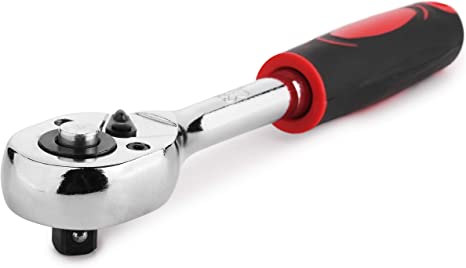





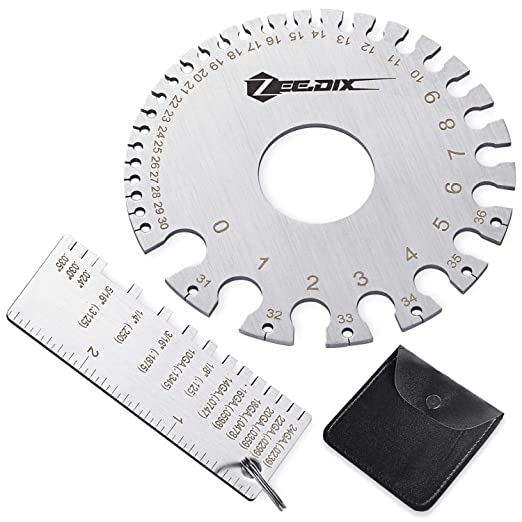


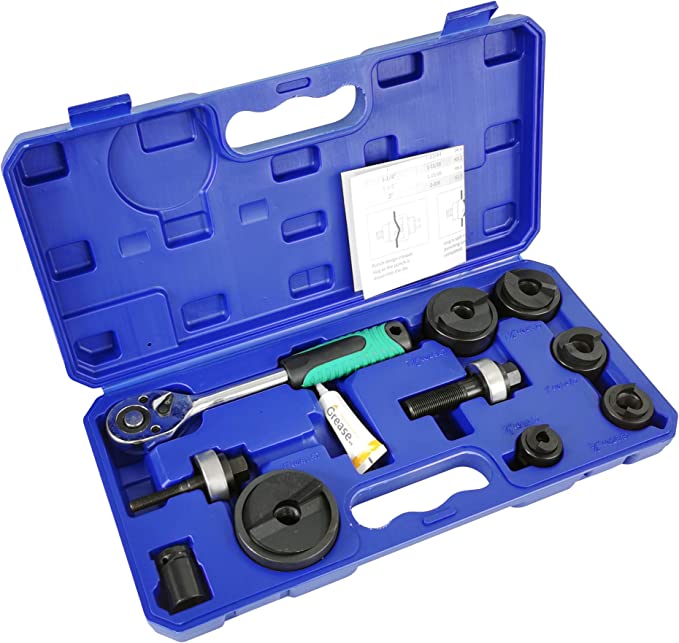




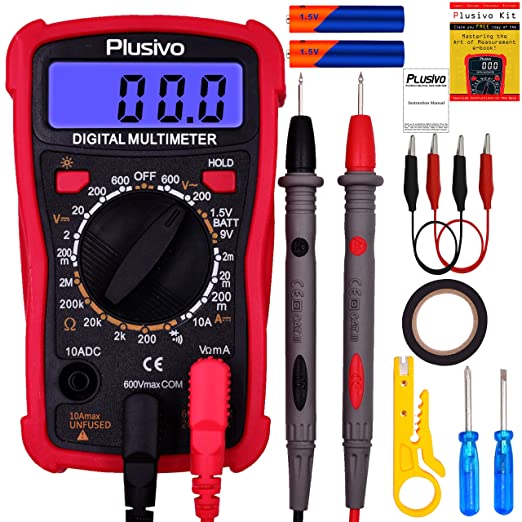


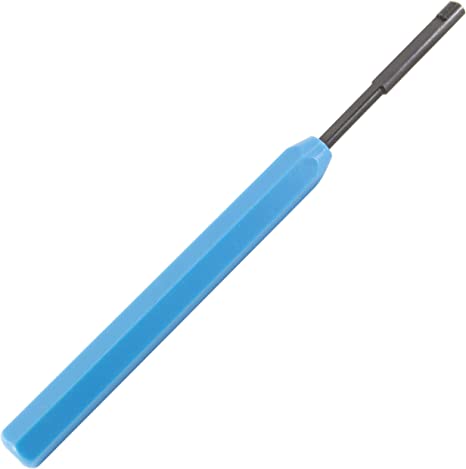
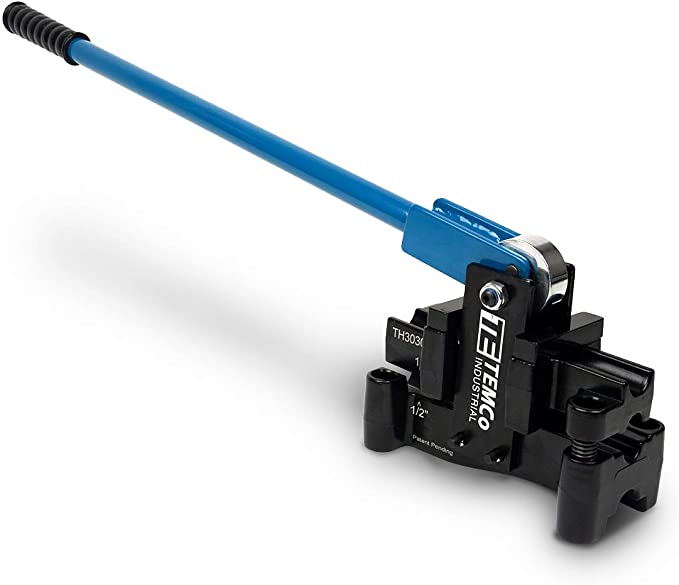



 Best Electrical Tapes for Outdoor Use: Buying Guide
Best Electrical Tapes for Outdoor Use: Buying Guide  What is an Arc Flash Relay? How Does it Work?
What is an Arc Flash Relay? How Does it Work?  What is a Dual Function Circuit Interrupter? And Its Function
What is a Dual Function Circuit Interrupter? And Its Function  Advantages and Disadvantages of Incandescent Lamps
Advantages and Disadvantages of Incandescent Lamps  VFD Parts: A Guide to Their Essential Functions
VFD Parts: A Guide to Their Essential Functions  Applications of 3-Phase Induction Motors in Industries
Applications of 3-Phase Induction Motors in Industries